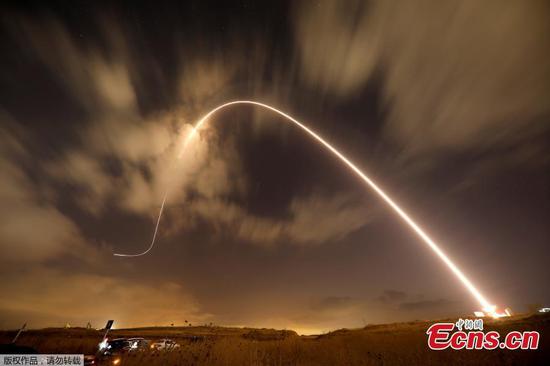U.S. President Donald Trump signs a more than $700 billion defense bill on Monday.
The spending plan for 2019 gives big increases to the U.S. military, which is now focusing more on what the White House calls “great power competition”–aiming specifically at China and Russia.The bill takes specific aim at China in key areas. Here are some of the measures taking effect:
• Prohibits China from Rim of the Pacific Naval exercises
• Plans for strengthening Taiwan’s self-defense capabilities
• Orders public report on China activities in South China Sea
• Bans U.S. Defense Department use of Huawei or ZTE equipment
• Reform of foreign investment rules to address national security
• Cuts funding for Chinese language programs at universities that host Confucius Institutes
Analysts say the change in emphasis towards China is striking. “So, this is broad based, the suspicion of China and this sense of a threat from China. And, to me that’s a remarkable thing about this bill,” said Timothy Heath, Senior International/Defense Researcher at the Rand Corporation. He added that the defense bill reflects growing suspicion of China’s motives in the Pacific and beyond.
“It’s not simply authorizing more planes and ships to be built, which it does, but it also directs reporting requirements on issues on influence operations and espionage,” Health said.
The U.S. focus on China as a “strategic competitor” comes as the U.S. armed forces are downgrading their fight against terrorism and focusing more on Asia Pacific. The U.S. defense secretary visited his counterparts in China in June and stressed the need for cooperation, but not before criticizing Chinese actions at the Shangri-la Dialogue–a key regional security conference in Singapore.
The U.S. defense bill also provides more money to forge closer defense relationships with other nations like India and Sri Lanka. This year saw the first visit of a U.S. aircraft carrier to Vietnam since the end of the Vietnam War.
All over the Indo-Pacific – as the U.S. now labels the region – the U.S. is increasing its already overwhelming naval and air superiority.
China is not alone. The bill provides funding for an “active defense” against Russia, Iran and the DRPK. To enhance European security against Russia–the bill includes plans for a permanent U.S. presence in neighboring Poland. NATO ally Turkey, will be denied access to the new F-35 fighter jet at least for now.
As part of the Pentagon’s focus on China, this defense act also adds another aircraft carrier to the U.S. fleet. In total, 46 new ships are planned for the U.S. Navy over the next five years. It is worth emphasizing that in the U.S., there is little political opposition for this $717 billion budget, which is the largest in the U.S. Pentagon’s history. This year’s defense spending request made its way through the U.S. Congress far quicker than usual.
Nathan King


















































